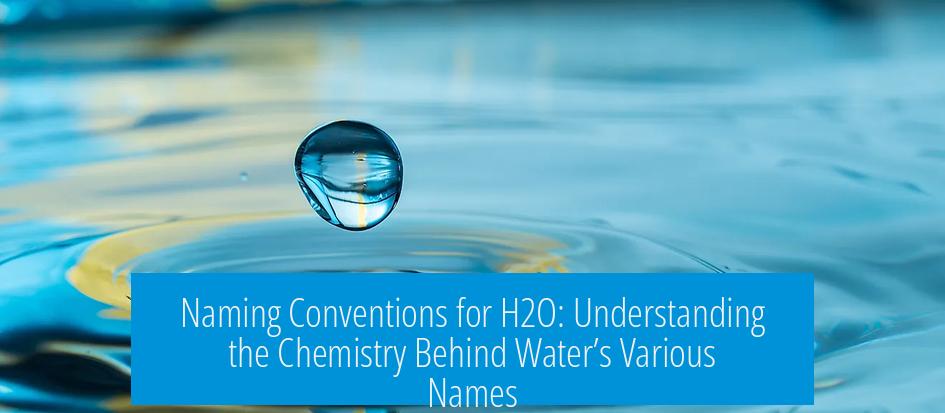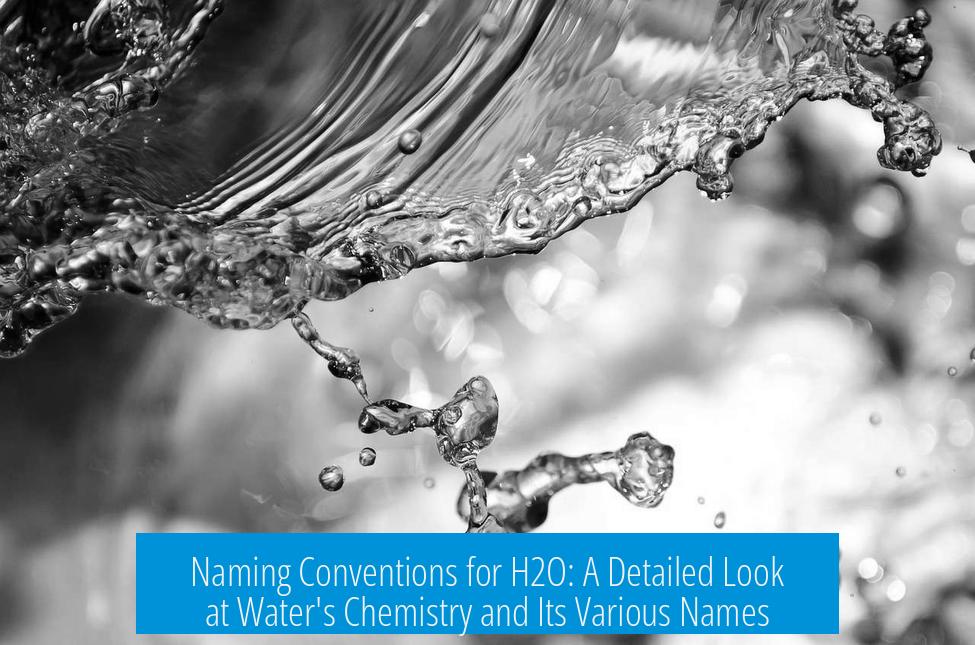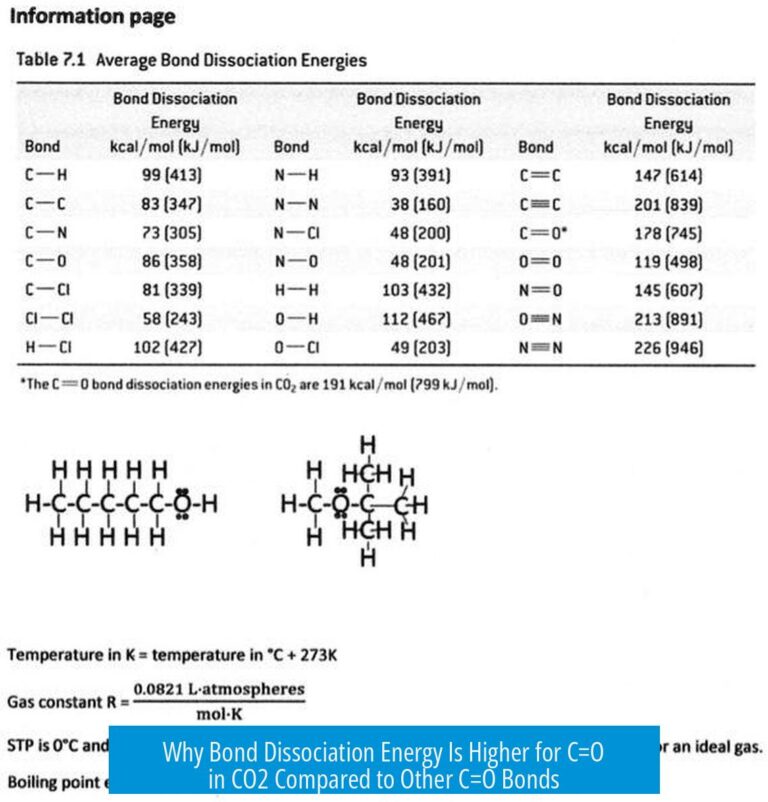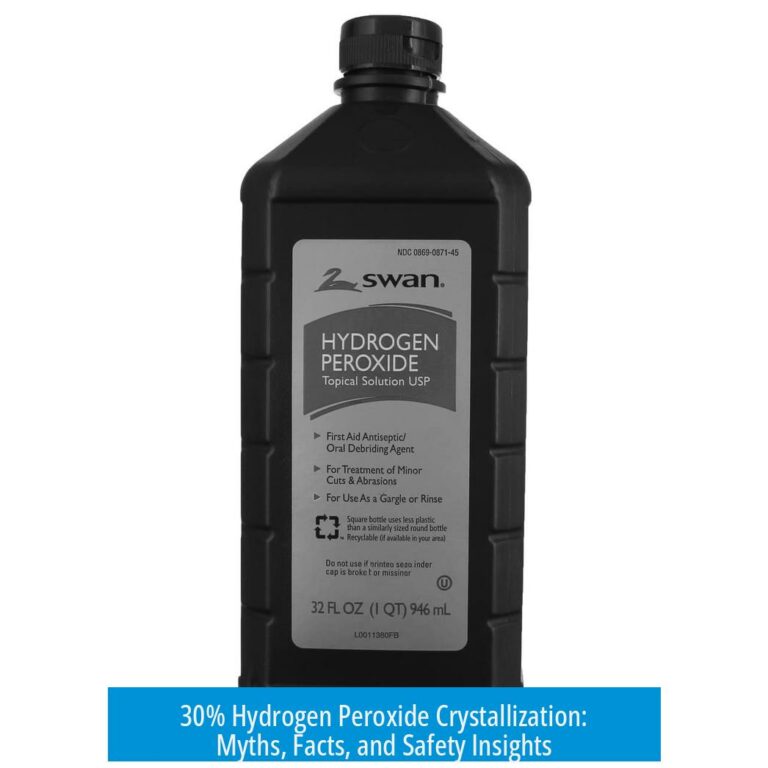Naming Conventions for H2O: Understanding the Chemistry Behind Water’s Various Names

Water is chemically known as H2O, yet its official IUPAC name is not commonly used outside the scientific community. The International Union of Pure and Applied Chemistry (IUPAC) designates “oxidane” as the formal name for water. This article clarifies the accepted nomenclature, alternative names, debates, and misconceptions surrounding the naming of this essential compound.
1. Official Nomenclature: “Oxidane”
The IUPAC serves as the authoritative body that standardizes chemical naming conventions globally. For water, the official designation is “oxidane.” This term reflects the compound’s chemical structure, emphasizing the oxygen atom (“oxide” root) bonded to hydrogen atoms.
- Oxidane aligns with IUPAC systematic naming based on molecular composition and structure.
- It replaces common chemical names with unambiguous terminology preferred in scientific literature.
Despite its official status, “oxidane” remains unfamiliar outside academia, while terms like “water” or “dihydrogen monoxide” appear frequently in informal discussions.
2. Alternative Names and Their Context
Numerous alternative names for water circulate, some scientifically grounded and others humorously coined. These include:
- Dihydrogen monoxide (DHMO): A well-known name in chemical humor and urban myths, highlighting water’s composition but often portrayed as a hazardous chemical in prank campaigns.
- Hydrogen hydroxide: Emphasizes the presence of hydrogen and hydroxide ions; it’s chemically accurate but atypical in practical use.
- Hydrogenol: A less common name derived from “hydrogen” and “alcohol,” although strictly speaking, water is not an alcohol.
- Diprotium monoxide: A name drawing from isotope terminology (protium being the ordinary hydrogen isotope).
- Hydric alcohol or Hydric hydroxy: Nonstandard terms exploring water’s relation to hydrogen or hydroxyl groups.
- Hydrous oxide: A descriptive name pointing to oxide with water of hydration.
These alternative names have varying degrees of scientific rigor. Some reflect structural or compositional perspectives while others serve as mnemonic or humorous identifiers.
3. Debates and Misconceptions Around Specific Terms
Several naming attempts encounter criticism based on chemical conventions, particularly regarding the term “hydride.”
- Named “oxygen dihydride” provokes debate because hydrides typically indicate compounds with hydrogen in an oxidation state of -1, which is not the case for water where hydrogen is +1.
- “Hydride” applies to hydrogen anions (H−), not the hydrogen atoms as in water.
- Terms like “hydronium hydroxide” are humorous, representing protonated water complexes and hydroxide but not standalone water molecules.
Understanding oxidation states and correct chemical classifications is critical for accurate nomenclature, preventing misuse or confusion.
4. Cultural and Historical Aspects of Water’s Names
“Dihydrogen monoxide” became a viral meme and prank in 2009, introduced as a “dangerous chemical” in parodic campaigns to raise awareness of chemical nomenclature and public scientific literacy.
Other humorous nicknames like “Splashy McSplash-face” reflect cultural playfulness rather than chemical accuracy.
These informal names highlight society’s engagement with chemistry through humor and creative reinterpretation.
5. Educational Impact and Broader Chemistry Implications
Discussions on water’s naming conventions demonstrate the nuance in chemical nomenclature. Many appreciate better understanding chemical naming’s logic and authority from such debates.
Students and non-chemists report learning complex concepts quickly through exploration of water names. These discussions segue into broader questions, such as:
- How are compounds like hydrogen peroxide (H2O2) named differently from water?
- What defines hydrides and how does oxidation state affect chemical classification?
For example, hydrogen peroxide is named due to the presence of an extra oxygen atom compared to water, and naming highlights its distinct oxidative properties.
6. Thematic Naming and Roleplay: Alignments in Chemistry
Some participants entertain thematic or playful approaches to naming, categorizing water’s names as “Lawful Neutral,” “Lawful Evil,” or other alignments. While whimsical, this underscores the structured, rule-based nature of chemical nomenclature.
These metaphors help illustrate the tension between strict chemical rules and colloquial or humorous naming.
Summary
- Oxidane is the IUPAC-sanctioned name for water (H2O), though rarely used outside specialized contexts.
- Alternative names like dihydrogen monoxide are popular but serve mostly humorous or educational purposes.
- The term hydride is misapplied when describing water because hydrogen is not in a negative oxidation state.
- Water’s naming sparks discussions about chemical nomenclature, oxidation states, and the logic underpinning systematic naming.
- Humorous and cultural nicknames engage broader audiences and reinforce understanding of scientific naming conventions.





Leave a Comment